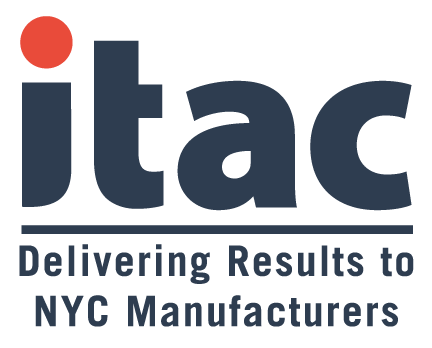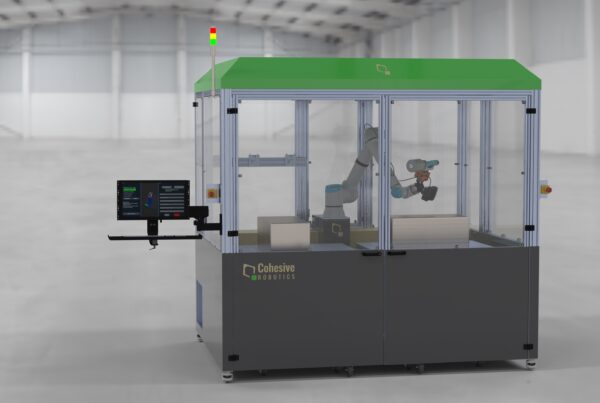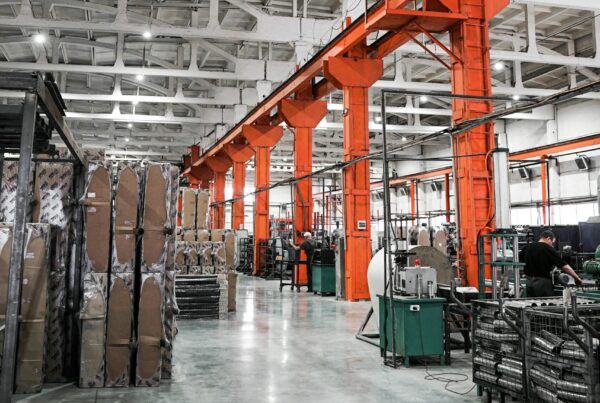7 Manufacturing Digitization Challenges
Artificial intelligence (AI)-powered robots, 3D printing, the Internet of Things (IoT)…there’s a whole world of advanced manufacturing technology and innovation just waiting for small and medium-sized manufacturers (SMMs) who want to step up their digital game. Unfortunately, manufacturing digitization can present some fundamental challenges, like added cybersecurity risk.
So how do smaller manufacturers increase their advanced manufacturing technology capabilities while balancing the associated risks? Let’s dissect some of the top challenges for SMMs when it comes to implementing advanced manufacturing technology applications.
1. Cybersecurity Plan
All technology implementations should begin with a plan that includes cybersecurity. A sound cybersecurity plan not only helps manufacturers identify and improve current security protocols, it also positions them to manage future risk.
Key stakeholders should identify the most critical information assets to protect, map how that information flows through the organization (currently and with any proposed technology or process changes) and determine the level of risk if that information was lost or compromised.
This sets the foundation for how the company will address risks to that information and can be used to assign risk management roles, develop secure procedures, and implement appropriate safeguards.
2. Available Capital
Without a plan, an organization’s efforts to digitize manufacturing operations can lead to unbounded investment costs. This is especially true when considering the cybersecurity aspects of a digital environment where investments can become reactive if not thoughtfully prepared for in advance. Once a plan is implemented, it enables SMMs to sensibly invest in advanced manufacturing technology capabilities over time to deliver ROI benefits such as:
- Increased operational efficiency and agility;
- Reduced downtime, and
- Improved ability to predict and adjust to facility and supply changes.
There’s also the cost of non-adoption to consider when it comes to digitizing manufacturing operations, such as failing to keep pace with competitors or struggling to meet current market expectations. A thorough investment plan considers the cost and benefit to implementing – or not – any changes, when those changes should occur, and how much money to set aside to prepare for those changes.
3. Learning Curve
One of the biggest manufacturing digitization challenges is the lack of relevant knowledge to implement advanced manufacturing technologies in a safe and secure manner. But overcoming this learning curve may be as simple as reaching out to external consultants experienced in providing guidance and resources to smaller manufacturers.
Enlisting outside expertise for any kind of technology implementation can help an organization leverage knowledge, skills, and abilities they wouldn’t be able to access otherwise. Outside experts can provide immediate implementation guidance and training to help organizations take advantage of innovations such as the following:
- AI / machine learning
- Advanced data analytics
- Augmented / virtual reality
- Automation
- Cloud computing
- Digital twins
- Sensors /IoT
- Wireless infrastructure
- Zero-trust models
4. Rigid Infrastructure
Manufacturing digitization efforts often need to overcome existing infrastructures that are rigid and likely incompatible with advanced manufacturing technology capabilities. Digital transformation requires transformation in every aspect of the organization, beginning with training.
Training may include, for example:
- New robotic operations;
- Flexible production line configurations, or
- Cloud-based resource planning.
5. Employee Reluctance
One of the most common manufacturing digitization challenges is humans. Human errors represent one of the most common risks facing organizations, including safety, quality, and cybersecurity risks. For example, humans can:
- configure machines incorrectly or insecurely;
- forward unprotected business sensitive information to outside parties for quoting;
- mishandle equipment, or
- open unknown attachments.
Digitizing manufacturing may require new processes and re-training on equipment. Unfortunately, humans are especially resistant to change. Where possible, change shouldn’t be imposed. Rather, it should instead be the outcome of a continuous discovery phase that empowers employees to test current processes and identify room for improvement.
The discovery process requires engagement at all levels of the business. It should begin with the company’s president or leader and then continue through key multi-departmental staff, including decision makers at every level of the organization. This process should consider the experiences and expertise of all employees, including but not limited to:
- administrative staff;
- engineering staff;
- IT managers and staff;
- operations managers, and
- shop floor employees.
6. Outdated Systems
Technology changes at a much faster pace than traditional manufacturing equipment, often with an expected lifespan of less than 10 years and planned obsolescence around 3-5 years. The older a technology infrastructure is, the more difficult it is to make it compatible with a digitized manufacturing environment.
In a fully realized digitized environment, appropriate data can be shared between a variety of systems. However, if business platforms and technologies are over five years old, they may not be able to read, write, or share data as needed.
Updating technology can be extremely challenging since numerous interdependencies must be considered. A carefully tested parallel, phased, or piloted implementation approach can be used to upgrade systems without impacting the production line. Leveraging a more modular approach to technology, such as by using standard application programing interfaces (APIs), can reduce these concerns for future innovation implementation.
7. Privacy Concerns
Digitization challenges often include privacy concerns, as digitized manufacturing capabilities can provide a window into every aspect of a manufacturing operation. Privacy should be considered whenever information is collected that could be used to identify a person. This may include employee or customer contact information as well as the data collected by certain IoT sensors, cameras, or biometric authentication devices. It is important to note that while data from one device might not present a privacy concern, that data combined with data from other devices could.
Taking cybersecurity seriously at the outset will give SMMs the opportunity to protect privacy as well, especially in the following areas:
- Contingency and disaster recovery planning
- Operational security
- Personnel security
- Physical security
Manufacturing Digitization Begins With a Plan
Each of the these manufacturing digitization challenges can be addressed with an implementation plan that works with current SMM processes, while enabling future growth opportunities to stay competitive. Fortunately, there are resources for smaller manufactures to take that first step towards advanced manufacturing technology integration.
Helping SMMs step up their technology game is part of the mission of the MEP National NetworkTM. With MEP Centers located in all 50 states and Puerto Rico, and over 1,400 trusted advisors and experts at approximately 375 MEP service locations, the Network provides U.S. manufacturers with access to the resources they need to embrace advanced manufacturing technology at their own speed. Reach out to ITAC (NYC MEP) for assistance today!
The insight is from NIST. To read the full article click here.






